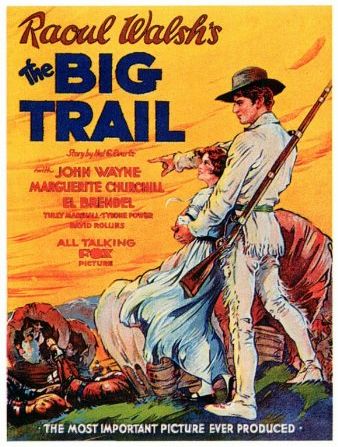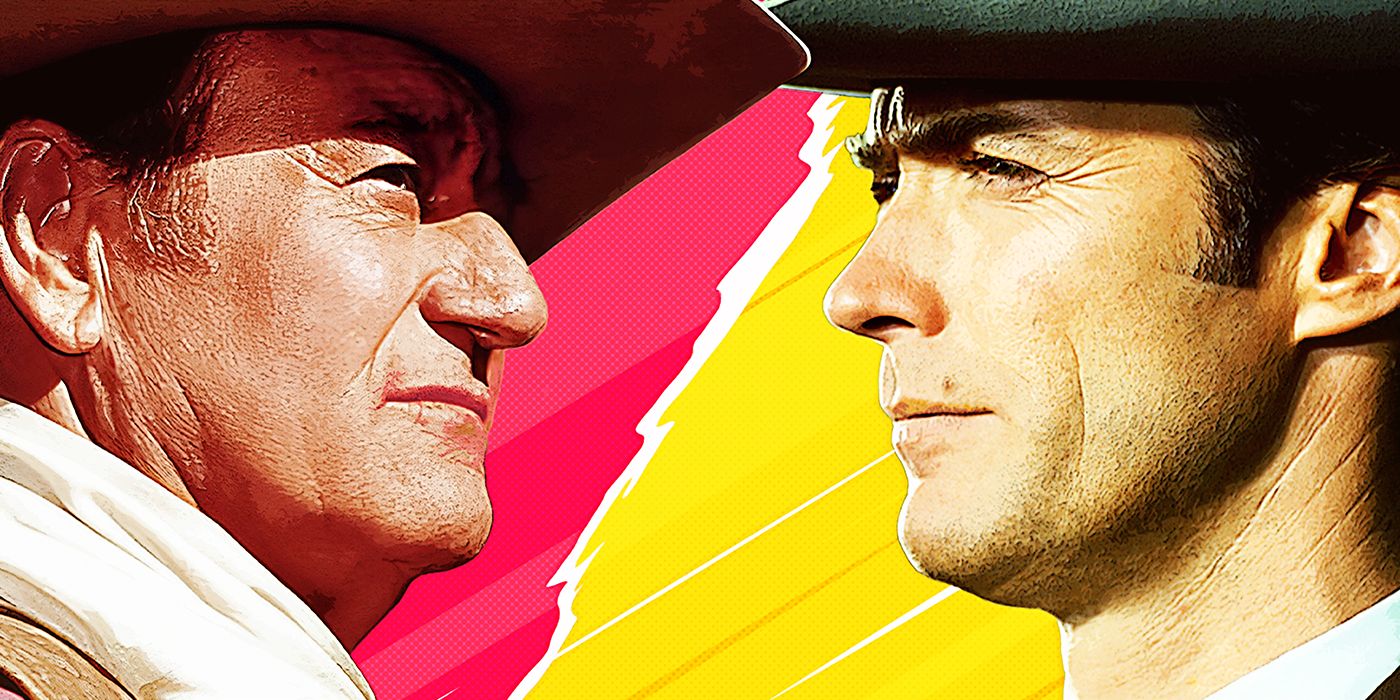The Big Picture
- John Wayne revolutionized screen combat by learning actual combat skills, inspiring future actors.
- Wayne paved the way for modern action films, promoting realism in violent scenes. He also subverted the cowboy archetype with his “fighting dirty” style, to enhance the realism on-screen.
- Wayne’s contributions include inspiring actors to do their own stunts and advocating for realistic screen fighting.
John Wayne was certainly not the only famous Western movie star of the “Golden Age of Hollywood,” as contemporaries like Steve McQueen, Yul Brynner, Gary Cooper, and Robert Mitchum were also critical figures within the genre. However, it’s impossible to deny the impact that Wayne’s work has on both genre films and the modern conception of the action hero. Many great film heroes who have emerged in the subsequent decades, such as Harrison Ford’s Indiana Jones or Clint Eastwood’s Harry Callahan, feel at least partially inspired by Wayne. Wayne epitomized a grim, yet sincere side of cinematic heroism, often playing characters who weren’t afraid to get their hands dirty. He was often a more talented actor than he was given credit for. Wayne’s fight scenes in particular stood out because he revolutionized screen combat.

The Big Trail
Breck Coleman leads hundreds of settlers in covered wagons from the Mississippi River to their destiny out West.
- Release Date
- November 1, 1930
- Director
- Raoul Walsh , Louis R. Loeffler
- Cast
- John Wayne , Marguerite Churchill , El Brendel , Tully Marshall , Tyrone Power Sr. , David Rollins , Frederick Burton , Ian Keith
- Runtime
- 125 Minutes
- Main Genre
- Western
John Wayne Learned To Fight for Real
Prior to Wayne’s emergence within the film industry, cinematic combat was not necessarily an art form that was taken seriously. While silent movie stars like Buster Keaton and Charlie Chaplin often performed incredible physical feats, they were generally intended to be comedic, and rarely suggested that the performers were in literal danger. During the early years of his career, Wayne took it upon himself to learn about stunt work and horseback riding so that he would be better prepared for subsequent work. These skills proved to be essential as his star status began to rise after a series of successful Western roles.
In order to ensure that he could actually handle himself in a fight, Wayne trained with the legendary stuntman Yakima Canuttwho had been performing stunts in Hollywood productions since the early 1920s. At the time, screen fights rarely included actual contact blows, often choosing to obscure the impact of a blow with an over-the-top sound effect. Wayne felt that this cheated the audience out of the authenticity of the moment, as it was evident that what they were seeing was fake. He chose to study newsreels of the heavyweight boxing champion Jack Dempsey in order to perfect his fighting style. While it was not an easy process, Wayne’s physical training helped prepare him for some of his most memorable onscreen fight scenes, including the final battle in John Ford’s 1939 Western masterpiece Stagecoach.
While learning the rules of combat was itself a challenging feat, Wayne also learned how to mentally place himself in the shoes of a fighter. According to Maurice Zolotow’s John Wayne biography, Shooting Star, Wayne said that he “wouldn’t hold back when I felt myself getting all worked up with hatred for a villain,” and that he “liked these fight scenes more than any other stunts we did.” According to Wayne, the problem with the earlier, more traditional cowboys was that they were “too goddamn sweet and pure to be dirty fighters.” He elaborated:
“Well, I wanted to be a dirty fighter if that was the only way to fight back. If somebody throws a chair at you, hell, you pick up a chair and belt him right back. I was trying to play a man who gets dirty, who sweats sometimes, who enjoys really kissing a gal he likes, who gets angry, who fights clean whenever possible but will fight dirty if he has to.”
In order to reinvent the traditional cowboy persona into something more modern, Wayne committed to the process, both physically and mentally. The training process wasn’t easy, as Canutt was occasionally injured during his training bouts with Wayne. However, both men continued to have successful careers within the subsequent decades because of their practical combat knowledge.
2:05

What Was the Feud Between Clint Eastwood and John Wayne?
Inside the duel between the two faces of the Western genre.
John Wayne Paved the Way for Modern Action Movies
The slapstick comedy films of the silent era may have featured elaborate stunt sequences, but Wayne was responsible for shepherding in the idea of the modern action genre. Stagecoach is often hailed as one of the greatest Westerns ever made because it refused to sanitize the dangers that were common within the era of history it was depicting. The film acknowledged that violent gun fights and conflicts with authority were common within the “Wild West,” and presented heroes and villains that were more ambiguous. It was a breakout film for both Wayne and Ford that kicked off one of the greatest director and actor partnerships in cinematic history.
The background in stunt work certainly was an advantage, as Wayne was often cast as characters with combat experience. Ford’s 1952 romantic epic The Quiet Man featured Wayne in the role of the Irish boxer Sean Thorton, who flees a potentially lucrative sports career after accidentally killing an opponent in the ring. Given Wayne’s legitimate training, the flashback sequences detailing the accident are quite haunting. Wayne was also able to bring more realistic action to the films he was creatively involved with; his work financing and directing the historical epic The Alamo earned him an Academy Award nomination for Best Picture.
Although the quantity of mainstream cinematic Westerns began to decline towards the tail end of his career, Wayne reinvented his star image with a series of revisionist westerns. His last film The Shootist was unique within his filmography, as it featured more graphic violent content and grueling fight scenes. It was one of the rare instances in which Wayne was able to look vulnerable on screen; it served as a role that was reflective of his grander action legacy.
John Wayne Inspired More Realistic On-Screen Combat
While his films certainly benefitted from the effort he put into training, Wayne also helped in creating a new camera trick that allowed for screen fighting to look more realistic. Wayne revealed that while shooting with director Robert Bradburythe filmmaker “said that he thought if he placed the camera at a certain angle it would look as if my fist was making contact.” The trick became known as the “pass system,” and Wayne mentioned that “other stuntmen and directors picked up on it, and it became the established way of doing a fight.” Wayne’s contributions to the industry at large were among his most notable achievements; he may have been one of the highest grossing Western actors, but he also established precedents that allowed future generations to succeed.
Wayne’s influence led to an influx of actors who do their own stuntsand popularized the idea of training to take on a physically demanding role. The impressive work that Tom Cruise does in the Mission: Impossible franchise or Milla Jovovich does in the Resident Evil series is a result of Wayne’s efforts to promote a more realistic style of screen fighting. It serves as a reminder that no amount of effects and camera tricks can replace the practical work that stunt artists do.
The Shootist is available to rent on Prime Video in the U.S.
Rent on Prime Video